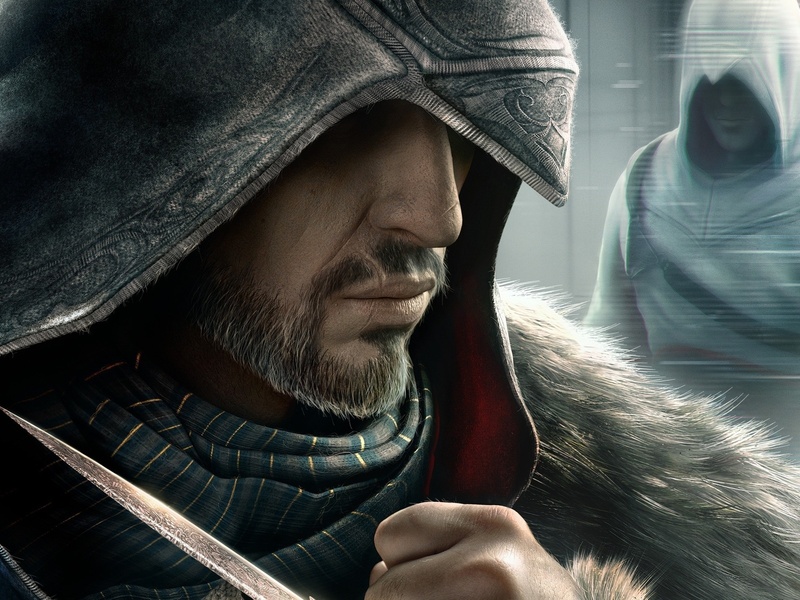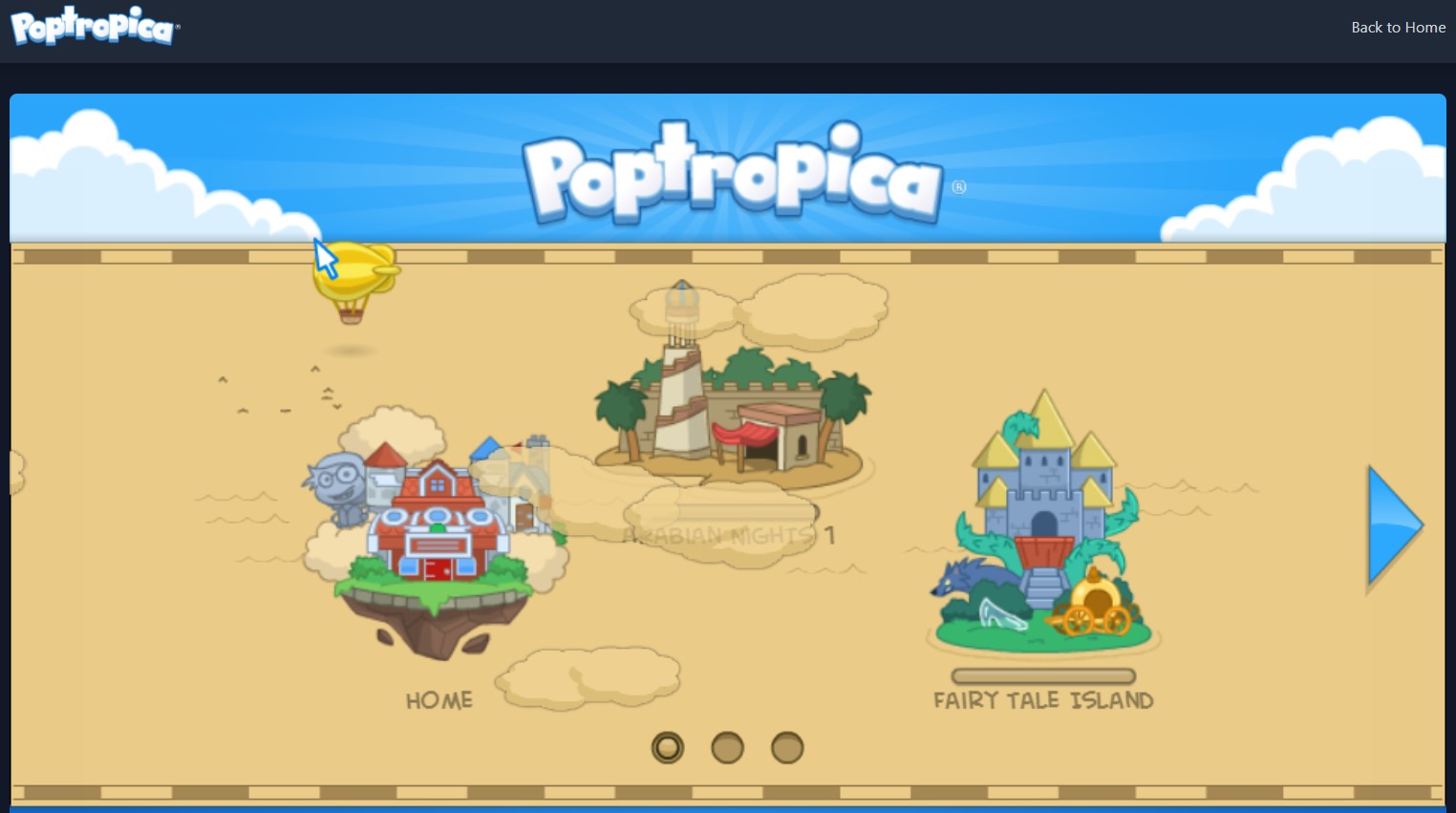Game
Unveiling the Art of Character Development in Gaming: Evolution, Progression, and Immersion

Introduction
Character progression and development within games are fundamental aspects that engage players and shape their gameplay experiences. The evolution of characters, their skills, abilities, and progression systems play pivotal roles in enhancing immersion and providing a sense of achievement. Let’s delve into the intricacies of character development in gaming, exploring its multifaceted nature and impact on player engagement.
Foundational Character Evolution
In most games, characters embark on a transformative journey, evolving from novice individuals into powerful, skilled protagonists. This evolution often mirrors the player’s own progression, creating a profound connection between the player and the character. Take RPGs (Role-Playing Games) as an example, where characters start with basic abilities and gradually acquire new skills and powers. This incremental growth not only mirrors the player’s learning curve but also contributes to the character’s depth and complexity.
Skills and Abilities
The acquisition of skills and abilities forms the core of character development. These traits can range from combat prowess to magical abilities or even non-combative skills like diplomacy or crafting. Games often offer various paths for skill development, allowing players to specialize their characters based on preferred playstyles. For instance, in games like “The Witcher 3: Wild Hunt,” players control Geralt of Rivia, a monster hunter. Throughout the game, players enhance Geralt’s combat skills, magical abilities (signs), and alchemical knowledge, tailoring his capabilities to confront diverse adversaries and situations. This flexibility enables players to personalize their gameplay experience, fostering a sense of ownership over the character’s growth.
Progression Systems
Games employ diverse progression systems to facilitate character development. Experience points (XP) systems are ubiquitous, rewarding players for completing quests, defeating enemies, or accomplishing objectives. As characters accumulate XP, they level up, unlocking new abilities or improving existing ones. Additionally, skill trees or talent systems offer a structured approach to character advancement. They present players with choices, allowing them to invest points into specific skills or abilities, shaping the character’s development according to individual preferences. “Diablo III” exemplifies this with its elaborate skill trees, empowering players to mold their characters into unique avatars tailored to their preferred playstyles.
Narrative Impact
Character progression isn’t merely about acquiring power; it intertwines with the narrative, shaping the character’s identity and relationships. Games often use character development to drive the storyline forward, reflecting personal growth or internal conflicts. A character’s progression can be tied to their emotional journey, making the gameplay experience more immersive and emotionally resonant. An excellent illustration of this narrative-driven character development is “The Last of Us Part II.” The protagonist, Ellie, undergoes significant emotional and moral evolution throughout the game. Her skills and abilities amplify this evolution, mirroring her determination and growth as she navigates a complex and emotionally charged narrative.

Image By:https://www.cinemablend.com
Player Engagement and Longevity
The effectiveness of character development significantly influences player engagement and the longevity of a game. Well-designed progression systems not only provide a sense of accomplishment but also incentivize players to explore and engage with the game world extensively. The allure of unlocking new abilities or mastering existing ones keeps players invested, driving them to uncover hidden secrets or complete challenging tasks. Games like “Skyrim” capitalize on this engagement by offering an expansive open world coupled with a diverse range of skills and abilities. Players can spend countless hours honing their character’s capabilities and immersing themselves in the game’s vast landscape, fostering an enduring gaming experience.
Evolution of Character Development in Gaming
The landscape of character development has evolved significantly over the years. From linear skill progression to more open-ended and customizable systems, developers continually innovate to offer players diverse and engaging experiences. Games now emphasize player agency, allowing them to shape characters in nuanced ways, fostering a deeper sense of connection and investment. Emerging technologies like procedural generation and adaptive AI are shaping the future of character development. Procedural generation enables dynamic content creation, offering players unique experiences in every playthrough. Meanwhile, adaptive AI systems personalize gameplay based on player choices, influencing the character’s progression and interactions within the game world.

Image By:https://attackofthefanboy.com
Conclusion
Character progression and development in gaming form the backbone of player engagement, offering a dynamic and immersive experience. The evolution of characters, their skills, abilities, and progression systems not only mirrors the player’s journey but also intertwines with the narrative, shaping emotional connections and driving the gameplay forward. As gaming technology advances, character development continues to evolve, promising more personalized and captivating experiences. By understanding the intricate nuances of character progression, game developers can craft compelling stories and gameplay mechanics that resonate deeply with players, ensuring an enduring impact on the gaming landscape.
Entertainment
Drift Hunters: The Quiet Art of Losing Control Gracefully

Introduction
Some driving games are built around competition. They push you to beat opponents, chase first place, or dominate leaderboards. Drift Hunters is not one of those games. Instead, it invites you into a quieter, more reflective world a place where drifting becomes an introspective practice, something closer to meditation than racing. There is no pressure, no aggressive AI, no frantic countdown. There is just you, your car, and the constant dance between grip and release.
What makes Drift Hunters so fascinating?
This is the way it slows you down mentally even as your car slides across the pavement. The moment the rear tires break loose, the world narrows into a single flow of motion. Everything unnecessary falls away: the noise in your head, the rush of your day, the clutter of responsibilities. You begin to feel the rhythm of the drift a subtle cycle of acceleration and correction, of commitment and uncertainty. In those moments, drifting becomes not just a mechanic but a breathing pattern.
Every map is designed to enhance this sense of calm focus. Open spaces let you experiment freely, without consequence. Long industrial stretches become extended thought corridors where you can settle into slow, deliberate drifts. Mountain roads challenge your concentration, forcing you to treat each corner like a fragile moment you must handle with care. The game never shouts at you. It gently shapes your awareness, guiding you toward a deeper understanding of how cars move and how your hands respond.
Drift Hunters feels more like adjusting
Then there’s the tuning. It may appear technical on the surface, but tuning in Drift Hunters feels more like adjusting a musical instrument than tweaking machinery. A small shift in suspension softness can transform a car from anxious to patient. A change in brake bias alters its emotional vocabulary. And as you experiment, you begin to craft a driving style that feels personal a reflection of your temperament. Are you bold, constantly pushing the rear end outward? Or cautious, preferring controlled slides and smooth transitions? The game doesn’t judge. It simply presents the tools and lets you discover yourself through trial and error.
Because of this, Drift Hunters becomes a space where improvement feels natural and unforced. You’re not grinding for rewards you’re refining your technique because the process itself is satisfying. The longer you play, the more you learn to appreciate the subtleties: the precise moment when weight transfers, the way a drift lengthens when throttle and steering find harmony, the strange sense of peace that comes from maintaining a long, uninterrupted slide. These experiences aren’t about spectacle; they’re about presence.
It gives you breathing room
And maybe that’s why Drift Hunters resonates with so many players. It doesn’t overwhelm you with features or gimmicks. It gives you breathing room a space to explore motion at your own pace, without judgment or noise. In a world where so many games demand constant attention and urgency, Drift Hunters offers something rare: the freedom to drift not because you must, but because it feels good to let go for a moment and trust the motion.
By the time you exit the game, you find that something has shifted. Your reflexes feel tuned, your thoughts feel clearer, and you’re left with a sense of quiet satisfaction. Drift Hunters doesn’t just teach you how to drift; it teaches you how to appreciate the fragile balance between control and surrender, both inside the game and in your own life.
What makes Drift Hunters feel different is how personal the journey becomes. Every car you tune starts to reflect you your habits, your struggles, your evolution. You might favor smooth, predictable setups with gentle suspension and balanced grip, or you might chase aggression with stiff springs, sharp angles, and turbo pressure cranked far beyond comfort. The tuning system doesn’t just give you options; it gives you identity. Your car becomes a mirror, showing exactly how far you’ve come since those first awkward drifts.
Drifting isn’t about perfection
And the deeper you go, the more you realize something unexpected: drifting isn’t about perfection. It’s about expression. No one drifts exactly the same way as someone else, and Drift Hunters embraces that endlessly. A perfect drift isn’t clean it’s honest. It carries your mistakes, your corrections, your instinctive decisions made in fractions of seconds. It feels alive because it’s shaped by the person holding the wheel.
That’s why Drift Hunters stays with people long after they close the game. It’s not just a driving experience it’s a memory maker. It gives you stories: the time you kept a combo alive for minutes without breaking; the run where everything clicked and the car flowed like water; the night you tuned a setup so dialed-in that even mistakes felt intentional. These are the chapters that players carry with them, retelling them the same way someone might describe an unforgettable trip or a first breakthrough.
Drift Hunters doesn’t push you to win. It invites you to improve, to grow, to enjoy the journey from novice to master a journey where your only real opponent is who you were the last time you drove. And with every session, every adjustment, every drift that carries longer than you thought possible, you realize the deeper truth: this is a game that lets you build a story only you can write.
Game
Ultimate Guide Explore Every Adventure in Poptropica Game

Introduction
Poptropica is a captivating online game that combines adventure, puzzles, and creativity for players of all ages. Since its launch, it has attracted millions of players worldwide who enjoy exploring unique islands and completing challenging quests. Each island presents a different story, environment, and set of puzzles, making the game highly engaging and replayable. Whether you are a new player or a veteran, Poptropica offers a world filled with endless fun and discovery.
The game encourages problem-solving, critical thinking, and teamwork in certain islands. Players can customize their avatars, collect items, and unlock achievements as they progress. The colorful graphics, charming characters, and intuitive controls make the game accessible to everyone.
What is Poptropica?
Poptropica is an online virtual world where players can explore islands, complete quests, and earn rewards. The game was created to encourage problem-solving, creativity, and teamwork among young players.
Key Features of Poptropica
- Custom Avatars: Players can personalize their characters with clothes, hairstyles, and accessories.
- Exciting Quests: Each island has unique challenges and stories to solve.
- Interactive Environments: Players can interact with objects, other players, and non-playable characters (NPCs).
- Rewards and Points: Completing quests earns players coins, trophies, and other rewards to unlock items or new areas.
- Safe Gameplay: Poptropica provides a child-friendly environment with moderation and parental controls.
Getting Started with Poptropica Adventures
To start playing Poptropica, you make a free account and create a unique avatar. This avatar represents you in the game and helps unlock new experiences. After making your avatar, you can explore the first island, which teaches basic gameplay.
Knowing the map and island layout is important. Islands have different zones with puzzles, characters, and hidden secrets. Collecting items is key—some are needed to progress, and others are collectibles that make your profile better.
Choosing Your First Island Challenge
Poptropica has many islands, each with its own story and difficulty. Beginners usually start with easy islands like Early Poptropica, Early Poptropica Adventure, and Time Tangled Island. These islands have simple puzzles, easy enemies, and basic platforming challenges.
Intermediate players can try islands like Mythology Island, Spy Island, or Super Power Island. These have harder puzzles, stealth tasks, and combat challenges. Players need to plan carefully to beat obstacles and enemies. Each island ends with a final challenge or boss that tests all the skills learned in the game.
Mastering Puzzles and Quests
Puzzles are a big part of Poptropica. They can be easy or very tricky, and often need players to use items, talk to characters, and follow story clues. Trying different solutions and keeping at it usually leads to success and rewards.
Quests guide players through each island. Finishing quests can unlock new areas or special items. Some quests are optional but give extra achievements and collectibles. Paying attention to dialogues and visual hints helps solve quests faster and with less frustration.
Popular Poptropica Islands and Their Adventures
Poptropica has many islands, each with a unique theme, story, and challenges. Here are some of the most popular:
1. Early Poptropica Adventures
- Poptropica Tutorial Island: Learn the basics of movement, jumping, and interacting with objects.
- Early Islands: Simple puzzles and story-driven missions that help beginners get familiar with the game.
2. Story-Driven Islands
- Myths of the World: Solve ancient myths, find treasures, and outsmart magical creatures.
- Time Tangled: Travel through history to fix timelines and prevent chaos.
- Astro-Knights Island: Space-themed adventures where players defeat aliens and solve cosmic challenges.
3. Seasonal and Special Event Islands
Poptropica releases temporary islands for events, holidays, or celebrations. These islands offer unique rewards and limited-time experiences.
4. Challenging Puzzle Islands
Some islands focus on critical thinking and problem-solving:
- Super Power Island: Unlock superpowers while solving puzzles.
- Spy Island: Complete secret missions and decode messages to progress.
Exploring every island ensures you experience the full world of Poptropica and earn all possible rewards.
Collecting Costumes and Items
One of the most enjoyable aspects of Poptropica is customizing your avatar with costumes and accessories. Players can earn costumes by completing quests, solving puzzles, or purchasing them in the in-game store. Some islands offer unique outfits that are themed according to the story, such as pirate gear, superhero suits, or historical clothing.
Items are not only decorative but often functional. Tools, keys, and gadgets are essential for overcoming obstacles and completing missions. Managing your inventory effectively is important, as some items can be combined to create new tools or unlock secret areas. Collecting rare items also adds a layer of competition among players who aim to complete their Poptropica collections.
Strategies for Advanced Players
Advanced players improve by planning and exploring carefully. Learning island layouts, watching NPC actions, and trying different item combinations can help complete islands faster. Guides and online communities can give tips, but figuring things out on your own is often more rewarding.
Speedrunning Poptropica is popular among dedicated players. Moving efficiently, solving puzzles quickly, and remembering enemy patterns can save a lot of time. Multiplayer islands let players work together to solve puzzles and share resources, which also helps improve teamwork and social skills.
Navigating Poptropica Social Features
Poptropica has social features like friend lists, chat, and group activities. Players can play with friends, share achievements, and explore islands together. Being kind and positive helps keep the game fun for everyone.
Events and seasonal updates add special items, challenges, and quests. Joining these events can give rare rewards and keep the game interesting. Following official announcements and forums helps players know about new content and tips.
Tips for Maximizing Fun and Progress
To enjoy Poptropica fully, players should balance exploration, quest completion, and item collection. Experimenting with different islands in varying difficulty levels improves problem-solving skills and prevents monotony. Taking breaks and revisiting previously completed islands can also uncover hidden secrets missed during the first playthrough.
Saving frequently and backing up accounts is important, especially for players who invest considerable time into collecting items and completing quests. Being patient and persistent is key, as some puzzles may require multiple attempts and creative thinking.
Tips for Maximizing Fun and Progress
To enjoy Poptropica fully, players should balance exploration, quest completion, and item collection. Experimenting with different islands in varying difficulty levels improves problem-solving skills and prevents monotony. Taking breaks and revisiting previously completed islands can also uncover hidden secrets missed during the first playthrough.
Saving frequently and backing up accounts is important, especially for players who invest considerable time into collecting items and completing quests. Being patient and persistent is key, as some puzzles may require multiple attempts and creative thinking.
Tips to Explore Poptropica Efficiently
1. Follow Clues Carefully
Each quest provides hints to solve puzzles. Paying attention to dialogues, objects, and the environment is key to progress.
2. Collect Coins and Items
Coins help buy tools or costumes needed to complete certain challenges. Collect as many as possible to unlock special abilities.
3. Complete Side Quests
Side quests often provide extra rewards, secret items, and bonus points. Don’t skip them—they add fun and exploration opportunities.
4. Use Interactive Objects
Clicking or interacting with items in the environment can reveal hidden paths, tools, or clues for main quests.
5. Team Up With Friends
Some puzzles and tasks are easier when discussed with friends. Multiplayer interaction can give hints and strategies.
How to Solve Puzzles in Poptropica
Poptropica puzzles require attention, patience, and creativity. Here are strategies to solve them:
- Observation: Look carefully at every object. Hidden clues are often disguised as ordinary items.
- Trial and Error: Don’t be afraid to try different combinations or approaches to see what works.
- Use Collected Items: Some items collected earlier are essential for solving puzzles later.
- Think Logically: Many puzzles require logical steps. Take your time and plan your moves.
- Seek Patterns: Codes, colors, and symbols often repeat. Recognizing patterns helps solve challenges faster.
Rewards and Achievements
Completing adventures in Poptropica earns rewards that improve your gameplay experience:
1. Coins
Use coins to buy costumes, tools, and special items.
2. Trophies and Badges
Showcase your achievements on your avatar profile to indicate completed quests and special accomplishments.
3. Exclusive Items
Some islands provide rare or limited-time items that can only be earned by completing challenges.
4. Unlocking New Islands
Completing quests unlocks additional islands, expanding the game world and providing more adventures.
How Poptropica Encourages Creativity and Learning
Poptropica is not just fun—it encourages critical thinking, problem-solving, and creativity:
- Storytelling Skills: Players engage with rich storylines and character interactions.
- Strategic Thinking: Many puzzles require planning and strategy to solve.
- Exploration and Curiosity: Players are rewarded for exploring every corner of an island.
- Collaboration: Multiplayer features encourage teamwork and communication.
- Learning Through Play: Quests often teach history, myths, or scientific facts in a fun way.
Conclusion of Poptropica Experience
Poptropica remains one of the most engaging and versatile online adventure games available today. Its combination of storytelling, puzzles, exploration, and social interaction creates an immersive experience for players of all ages. Whether you are exploring your first island or mastering advanced challenges, the game offers endless opportunities for creativity, problem-solving, and fun.
Game
How to Get an Online Betting ID Safely and Easily

Introduction
Online betting has become increasingly popular, allowing users to enjoy sports, casino games, and other activities from the comfort of their homes. However, getting an online betting ID safely is crucial to ensure secure transactions and a smooth betting experience. Many beginners face challenges in creating a verified account without falling into scams or unsafe platforms. This guide will walk you through how to get an online betting ID safely and easily, highlighting trusted steps, precautions, and tips for a secure online betting experience.
Why You Need a Trusted Online Betting ID
A trusted online betting ID is not just a username; it is your access to secure deposits, withdrawals, and betting accounts. Using a verified ID ensures that your money is safe, your personal details are protected, and you can enjoy seamless gameplay without interruptions.
Reasons to use a trusted online betting ID include:
- Secure login and account protection
- Verified identity for smooth withdrawals and deposits
- Protection against fraud or scams
- Access to bonuses and promotions offered by legitimate platforms
- Legal compliance depending on your region
Without a trusted online betting ID, users risk losing money, facing account suspensions, or encountering fraudulent websites.
How to Get an Online Betting ID Safely and Easily
Step 1: Choose a Reliable Online Betting Platform
The first step in getting a betting ID is selecting a trustworthy platform. Look for:
- Licensed and regulated websites
- Positive user reviews and reputation
- Secure website connections (https)
- Transparent terms and conditions
- Multiple payment and withdrawal options
Choosing a reliable platform ensures that your account will remain secure, your funds will be safe, and your overall betting experience will be enjoyable.
Step 2: Gather Necessary Personal Information
Most betting platforms require basic personal information for verification. Before signing up, ensure you have the following ready:
- Full name as per legal documents
- Date of birth to verify age
- Contact information including email and phone number
- Bank or payment details for deposits and withdrawals
- Government-issued ID or proof of identity if required
Having these details ready speeds up the registration process and ensures smooth verification.
Step 3: Create Your Online Betting Account
Once you choose a platform and gather your details, follow these steps to create your account safely:
- Visit the official website of the betting platform.
- Click on “Sign Up” or “Register.”
- Fill in your personal information accurately.
- Create a strong password that includes letters, numbers, and symbols.
- Verify your email or phone number if the platform requires it.
Accuracy is important to avoid delays during the verification process or withdrawals later.
Step 4: Verify Your Identity
Most trusted platforms require identity verification to prevent fraud. This step may include:
- Uploading a government-issued ID such as a passport, driver’s license, or national ID
- Providing proof of address, like a utility bill or bank statement
- Confirming your phone number or email
Verification helps ensure your account is secure and prevents unauthorized access. Completing this step quickly also allows you to access all betting features without limitations.
Step 5: Secure Your Online Betting ID
Once your account is created, keeping it secure is essential. Tips for security include:
- Using a strong, unique password
- Enabling two-factor authentication if available
- Avoiding shared networks when accessing your account
- Regularly monitoring transactions for suspicious activity
- Never sharing your login credentials with anyone
These precautions protect your money and personal data while enjoying online betting safely.
Step 6: Make a Safe Deposit
To start betting, you need funds in your account. Safe deposit methods include:
- Bank transfers from verified accounts
- Reputable e-wallets
- Secure online payment methods accepted by the platform
Avoid using unofficial methods, as they can lead to scams or account suspension. Always ensure deposits are made on the official website.
Step 7: Start Betting Responsibly
With your verified betting ID and funds in your account, you can start betting. However, responsible betting is key:
- Set limits on your deposits and wagers
- Avoid chasing losses
- Understand the games or bets before placing them
- Take breaks if needed to maintain a balanced approach
Responsible betting ensures that you enjoy the experience without risking financial harm.
Common Mistakes to Avoid When Getting a Betting ID
- Using unverified or illegal platforms
- Sharing your account credentials
- Ignoring verification steps
- Depositing funds through untrusted channels
- Not checking platform security measures
Avoiding these mistakes keeps your account safe and enhances your online betting experience.
Why Using a Trusted Betting ID Matters
A trusted online betting ID is your key to a safe and enjoyable experience. It ensures secure deposits, verified identity, legal compliance, and protection from fraud. Platforms that require identity verification tend to offer better customer service, access to bonuses, and faster withdrawals. In short, a trusted betting ID is essential for convenience, security, and peace of mind.
Conclusion
Getting an online betting ID safely is simple when you follow the right steps. Start by choosing a reliable platform, gather your personal information, create and verify your account, and secure it with strong passwords and security features. Make deposits only through trusted methods and practice responsible betting to enjoy the experience fully. A trusted online betting ID protects your funds, personal information, and provides smooth access to all betting features, making your online betting journey safe, easy, and enjoyable.
-
Business2 years ago
Cybersecurity Consulting Company SequelNet Provides Critical IT Support Services to Medical Billing Firm, Medical Optimum
-
Business2 years ago
Team Communication Software Transforms Operations at Finance Innovate
-
Business2 years ago
Project Management Tool Transforms Long Island Business
-
Business2 years ago
How Alleviate Poverty Utilized IPPBX’s All-in-One Solution to Transform Lives in New York City
-
health3 years ago
Breast Cancer: The Imperative Role of Mammograms in Screening and Early Detection
-
Sports3 years ago
Unstoppable Collaboration: D.C.’s Citi Open and Silicon Valley Classic Unite to Propel Women’s Tennis to New Heights
-
Art /Entertainment3 years ago
Embracing Renewal: Sizdabedar Celebrations Unite Iranians in New York’s Eisenhower Park
-
Finance3 years ago
The Benefits of Starting a Side Hustle for Financial Freedom






























